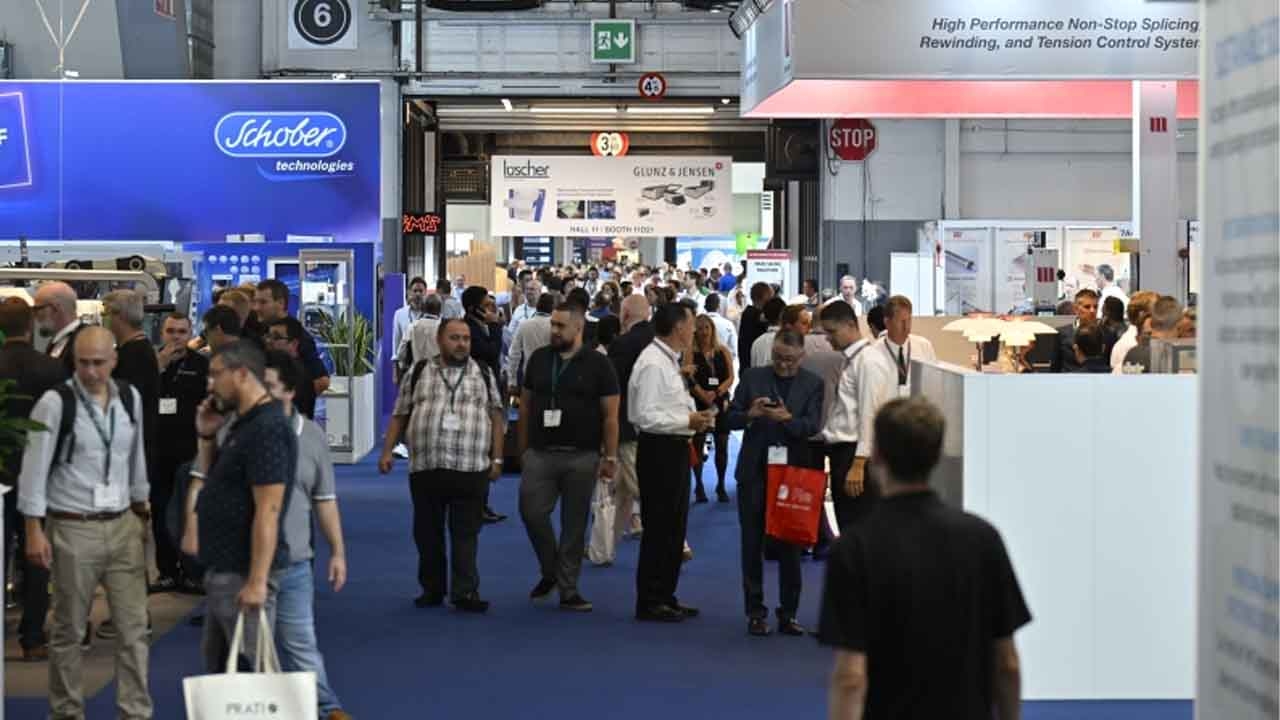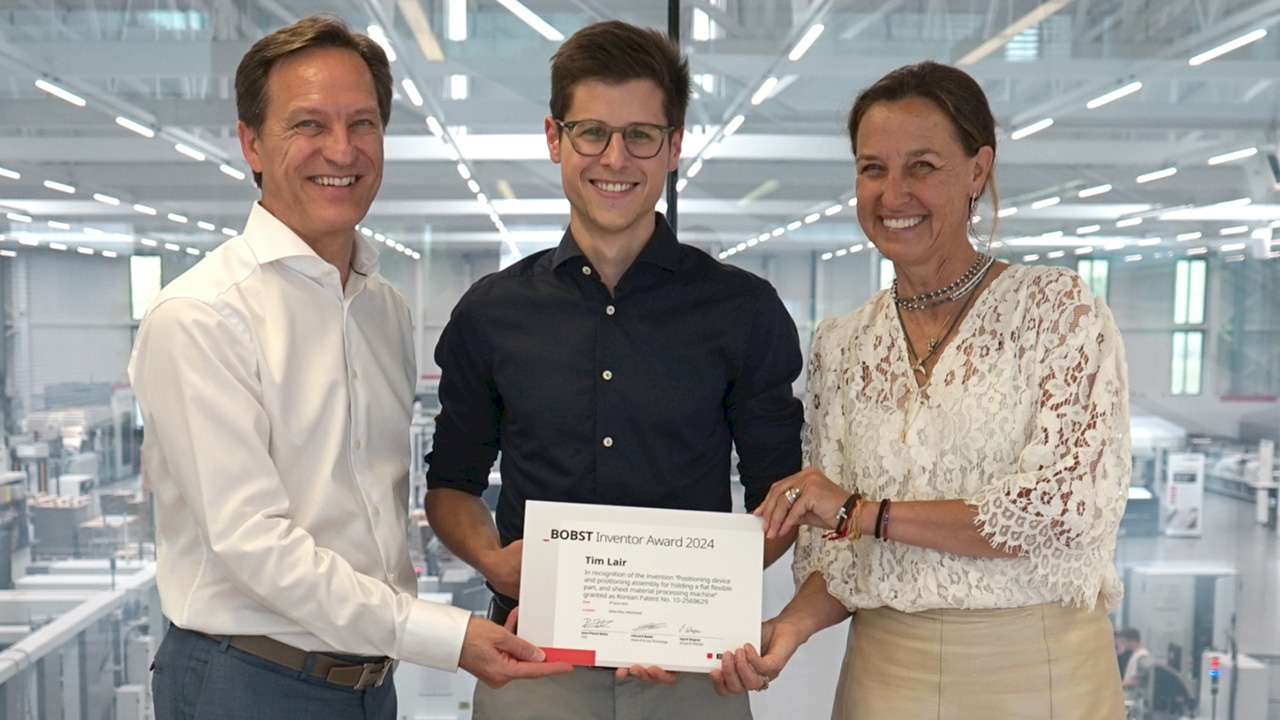Labelexpo transforming into a package printing showcase
In the last decade, Labelexpo has transformed into a showcase for short‑run flexpack as well as label technology. How has this come about – and are folding cartons next?

A decade ago, Labelexpo was still mainly a dedicated self-adhesive label show, albeit with shrink sleeves a growing force. But then we at Labelexpo started seeing an interesting trend in how visitors filled in their show registration cards, with more and more converters expressing an interest in flexible packaging.
At first, it was difficult to see how this could be. Flexible packaging was primarily about wide-web CI and gravure presses, and there seemed little crossover with the kinds of presses label converters were buying – mainly 330mm/13in and 430mm/17in with some 520mm/20in machines.
A new market
HP Indigo, however, seemed to have spotted a potential new market in flexible packaging for label converters when it announced the HP 20000 press in 2012. It was Labelexpo that primarily drove global sales of this press, with HP demonstrating a complete ecosystem of a laminator and pouch-making machine that could feasibly fit into a narrow web converter’s production plant.
What HP Indigo’s Alon Bar-Shany had picked up on at the time, was a quiet revolution in packaging formats. More brands were moving their premium products into high-value, small-format laminated stand-up pouches as an alternative to labeled containers.
There were many reasons for this, including the drive toward differentiation, easier placement on shelves using POS display units, and convenient resealable closing systems.
Because these were mostly premium products - or new marketing concepts - the run lengths were short, quality requirements high and brands wanted a fast turnaround.
Label converters already operated in this demanding environment, so they were perfectly placed to take advantage. Up to that point, brand owners had simply not been able to order short-run, multi-SKU lots of stand-up pouches because wide web CI and gravure presses are tuned for high volume, hyper-efficient production with relatively high minimum order requirements and months-long lead times. This in turn reflected on the flexible packaging supply chain, geared to delivery of multiple container-loads of raw materials to converters who often manufactured their own bespoke laminates.
This is a fascinating story of a new sector developing rapidly around the entrepreneurship of label and fl ex pack converters supported by a development drive from industry suppliers
Just in time
Very quickly, a new ‘just in time’ flexible packaging supply chain began to emerge for the growing number of label
converters dipping their toes into the short-run, high-value, fast-turnaround flex pack market.
Companies like Synthogra and S-OneLP were set up to supply ready-made pouching materials for surface printing on a JIT base, while Karlville and others perfected their small-footprint thermal laminating technology for label converters with limited floor space.
HP Indigo was soon joined by a growing number of flexo press manufacturers producing mid-web (670mm/26in) presses with combinations of UV and hot-air drying units for applying water-based coatings.
The challenges of UV printing on flexible films were tackled by the UVFoodSafe group, which ran extensive tests using new GEW technology which measures UV dose at the web surface to produce guidelines for best practice. These guidelines will be unveiled at Labelexpo Americas 2024.
Then something else interesting began to happen. Wide web converters started visiting Labelexpo – particularly in the US. The growing demand for short-run flexible packaging had put the show on their radar. They were faced with a dilemma. Their machines and supply chain ecosystems were not set up for short-run work, yet the demand was increasing. So Labelexpo offered a chance to look at the new shorter-run machinery, meet with co-suppliers and assess strategy. Start up a dedicated short-run division? Find a label converter to partner with? Or acquire?
Converters like Glenroy started selling pre-made pouch material to label converters. Emerald Packaging became an initial investor in digital-only flexpack specialist ePac – which in 2022 attracted major investment from Amcor.
So, this is a fascinating story of a completely new sector developing rapidly around the entrepreneurship of label and innovative fl ex pack converters supported by a major development drive from industry suppliers, all in the space of just over 10 years.
And now a question. Could folding cartons follow the same model?
HP Indigo did bring a complete folding carton line (the 30000) plus finishing partners Kama and Scodix but never repeated the experiment. Are folding cartons simply a step too far for label converters? Is this end-user industry and its requirements simply too different?
As with flexible packaging, if folding cartons were to move into Labelexpo, it would need to be as a disruptive technology based around in-line and digital technology familiar to label converters.
Labelexpo did not proactively push flexible packaging into the show – it developed as a natural result of the market forces we have examined.
So we will wait and see if folding carton developments push the show in the same direction.
Stay up to date
Subscribe to the free Label News newsletter and receive the latest content every week. We'll never share your email address.


